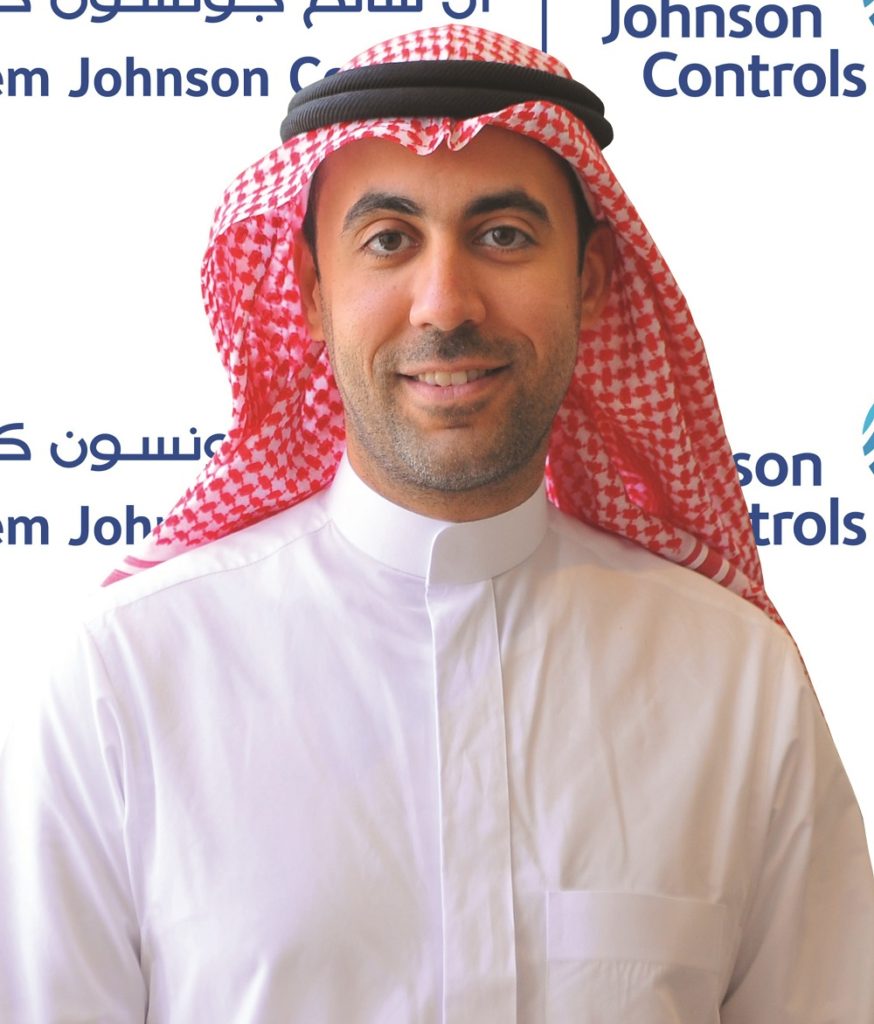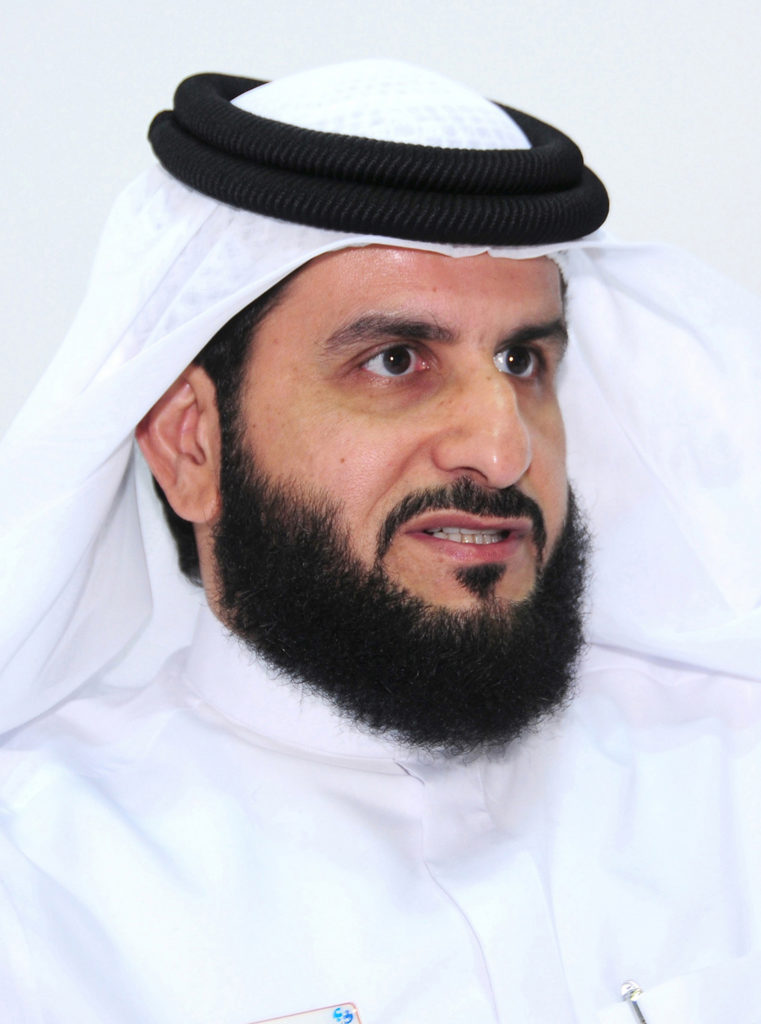Though BMS has been available in the market for many years, end-users continue to face obstacles that prevent them from fully reaping its benefits. One such obstacle, various stakeholders believe, is the industry-wide shortage of knowledgeable and skilled BMS operators. RMS has been proposed as a solution to overcome the problem, but is the region ready to deploy the technology?


Sandrine Le Biavant
If building owners and developers approached projects in the same way that automobile connoisseurs appraised cars, the United Arab Emirates and the rest of the GCC countries would find it easier to reduce their buildings’ energy consumption and implement their sustainable development agenda. Sharing her theory with Climate Control Middle East, Sandrine Le Biavant, Director of Consultancy at Farnek, talks about how car enthusiasts are just as concerned about the performance of a car’s engine as they are about the car’s appearance.
“As an FM company, we think that it would be great if buildings were like a Rolls Royce or a Bentley,” she says, before clarifying that when it comes to buildings, the “engines” would be controls solutions like Building Management Systems (BMS).
Driving home the point
Le Biavant is not alone in her thinking that there’s a connection to be made between cars and buildings. Mario Seneviratne, Director of Green Technologies, also recognises the relevance of the comparison between them. “The industry is being pulled by technological developments,” he says. “People want to go high-tech. When they buy a car, and you see the brains behind the car, it is immense – the safety [devices], the gadgets and features, etc. And that’s where the industry is today.” Pointing out that everybody would choose a Tesla over a low-end car, he adds: “If you take the car analogy to the building industry, you’ll see that we are in trouble.”

Mario Seneviratne
In support of his statement, Seneviratne recounts how in most of the projects that he and his team of consultants have visited, the BMS is often nothing but a “white elephant” – a big screen that doesn’t do much. “Recently, we conducted an audit of a major hotel chain,” he says, “and discovered that they are not measuring the incoming condenser water temperature and the energy [consumption] of the chillers. What is the point, then? The incoming condensing water temperature is an important parameter, so if they do not measure that, what is the use of a BMS? All the technology is specified by the consultant; it is there, but is anyone using it to make life better for the occupant or to save energy? Is it installed and maintained correctly? This is a drawback in the building industry.”
Dilip Sinha, General Manager of Honeywell Environmental and Energy Solutions in the Middle East, Turkey and Africa (META), offers a similar observation, saying: “In the Middle East, while we often see properly managed high-end buildings or critical spaces, such as hotels and hospitals, we also regularly see residential and commercial building maintenance left to security guards. In such cases, the investment in deploying BMS risks underutilisation.”
He acknowledges, however, that “developers and consulting engineers are well aware of [the value of] BMS and that they typically “include HVAC design in the building specification”, especially for mid- to high-end facilities.

Mohanad Alshaikh
Speaking along the same lines, Mohanad Alshaikh says that with the Gulf region having one of the top construction markets in the world, its adoption of technologies like BMS is on par with markets like North America. “The Middle East has some of the [world’s] most high-tech buildings that have been specified with BMS,” says the CEO of Al Salem Johnson Controls (Saudi Arabia and Lebanon). “North America is a mature market and has the edge of early adoption, but the Middle East is catching up fast. There is a big difference, however, in the post-construction phase. The region needs to work on developing a strong operations and maintenance model that will help sustain investments in energy technologies.”
Where does the problem lie?
If the region is catching up with the rest of the world when it comes to adopting the latest in controls solutions, why are building owners having trouble making the systems work for them? What’s causing the operations and maintenance issue?
For Seneviratne, the problem lies primarily with the maintenance industry. “Few entities know how to operate and maintain smart systems,” he says. “The maintenance industry is trailing behind. When it comes to the construction industry, you have consultants, project managers and quality managers. But you won’t find that calibre of professionals in the maintenance industry.”

Tariq Chauhan
Echoing Seneviratne’s assessment of the current scenario, Tariq Chauhan, Group CEO of EFS Facilities Services Group, admits that the industry is, indeed, experiencing a shortage of skilled human resources. He says: “In the last 15 years, construction technologies have changed and evolved in terms of both design and function. So the challenge now is not having enough skills to complement the change in technology within the core FM. The industry is struggling to find expertise and skills to manage these advanced systems.”
Better wages for better returns
While he agrees that the industry is low on skills, Jamal Abdullah Lootah, CEO of Imdaad, stresses that there is a bigger problem – one that he believes is, in fact, the reason behind the shortage. “The wages – that’s the main challenge in the FM industry right now,” he says. Elaborating, he reveals that many FM companies, the small outfits in particular, not only give their employees very low salaries but also assign them to a variety of roles – security guard at night and cleaner in the morning, for instance, without investing in any form of training or development programme.

Jamal Abdullah Lootah
Backing Lootah’s claim, Le Biavant maintains that one way the industry can address the dearth in expertise is by offering higher salaries. “Let me give you a picture of how things are,” she says. “In my division, we have dedicated energy auditors with the required analytical skills that allow them to extract data from the BMS as well as analyse it and use it to formulate an energy [management] and maintenance plan. You can’t require or expect technicians to be able to do all that. If you want that, you’ll need to give higher salaries, which is something that most clients are not willing to do.”
And willing is what they need to be if they want to get their money’s worth out of the systems installed in their buildings, says Vijay Kumar, President of International Business at Cylon. He explains that building owners are advised to invest in highly skilled in-house BMS operators since BMS doesn’t just collect data but also controls equipment like HVAC. “Imagine a conference room at a hotel,” he says. “It is booked for three days. On the first day, it’s booked for the whole day, but only for a few hours on the second and third days. Each day, the occupancy changes, so somebody has to feed the information to the BMS. This means that you need to have an operator all the time. And that’s not even close to being the only responsibility of the operator. Operators also need to manage the amount of information stored in the hard disk of the BMS computer, because the system is continuously receiving data from the sensors in the building. If left unattended, the system will become slow and deteriorate, in the same way that your iPhone will become slow when too many apps have been downloaded to it.”
We see residential and commercial building maintenance left to security guards. In such cases, the investment in deploying BMS risks underutilisation
Conveying his disappointment over what he describes is a sign of an immature market and corroborating the view of others, Kumar adds that even building owners who do start out having skilled technicians end up losing their staff because of low wages. “When a BMS is purchased, it typically comes with either a one- or two-year contract for maintenance and training,” he says. “After the period is over, customers can choose to extend the contract, but many don’t. And as I mentioned, in a lot of cases, the trained technicians eventually leave, because they are not being paid well. So now, the clients will have to bring in new people, but because they want to avoid incurring more costs, they choose not to have the new people trained. BMS is an excellent technology, but what good is technology if the person using the system either does not know how to operate it or only has half the knowledge required? You’re doing an injustice to the system.”
Going remote
Asked if he foresees the attitude of building owners changing anytime soon, Kumar answers without hesitation: “Unfortunately, no. I wish I could say that I see the market maturing, but even the industry itself does not fully understand what a BMS is supposed to do and what it can do.”
If that is the case, what then can be done to resolve the problem of underutilised control systems? “First, we need to educate the industry and create awareness,” says Kumar. “How do we do that? By having more technical seminars and product demonstrations. We need to be able to spread the message through workshops like those organised by ASHRAE.”

Vijay Kumar
Other than creating awareness, Kumar suggests coming up with a customised financial model centred on Remote Management Systems (RMS) to make the technology more appealing to the customer. He explains: “You bring in a financial or commercial model offering the client a cost-effective solution in the form of RMS. For example, you can go to a building owner and tell him, ‘Listen, you don’t need a BMS operator anymore. You don’t need to worry about his salary or his benefits; you don’t need to worry about upgrading your system or worry about its maintenance. You don’t need to worry about any of that, because we will take care of everything for you through remote monitoring and remote management. Our people in the central control room are all trained and well-paid and have the necessary skills to manage your building remotely.’”
Elaborating further on the benefits of RMS, Kumar adds: “With remote management, hundreds of buildings can be connected to the same central control room, and it will only take around 20 operators to manage a hundred buildings, 24/7. Now if the customer says he’d rather go for his own BMS, he’ll need at least three operators for his building alone, with each taking an eight-hour shift. That’s going to cost him a lot. But with RMS, he’ll have a properly monitored and managed building at a fraction of the original cost, not to mention, he’ll also be saving on his electricity bill, because RMS can be used to control the building’s energy consumption.”
The incoming condensing water temperature is an important parameter, so if they do not measure that, what is the use of a BMS?
The future is here
Kumar is not the only one who thinks that RMS could help solve the problems the region is facing in reaping the full benefits of control systems. Alshaikh, while conceding there isn’t much demand for the solution at the moment, asserts that it has potential of performing well in Gulf markets like Saudi Arabia. “The demand is very low now, but with increasing cost of operations and a lower crude price, RMS has the potential to improve a building’s operating and scheduling plan,” says Alshaikh. “RMS can even be started with small investments like smart, cloud-based devices, and then transitioned to a full-blown RMS centre. There are several options available in this space.”
Extrapolating from RMS to reiterate his point that “a strong O&M strategy” is necessary so building owners can sustain their investments, Alshaikh adds: “85% of a building’s lifecycle is in the O&M phase, and this is where the awareness level needs to increase. Smart buildings won’t be sustainable without a comprehensive maintenance strategy. RMS could be one of the maintenance strategies.”

Dilip Sinha
Sinha, on his part, is confident that RMS spells the future for the building industry, and says: “Currently, there are some isolated activities around RMS, but so far, there isn’t an organised approach to it. With today’s technology providing high availability networks, cloud solutions and big data, remote monitoring of buildings will become a reality in the coming years.”
The advantage of RMS, Sinha says, will not be limited only to helping building owners reduce their operational costs. “They will also be able to reap the benefits of having access to more advice and solutions from experts,” he says. “Connectivity will be more common, because of the convenience and flexibility it offers, but it’s very important that the industry and customers work together to ensure that these systems are deployed securely to help prevent unauthorised access.”
Cooperation is key
[div class=”text-box text-box-left” style=”background-color: #0B33D5; color: #FFFFFF; “]
Dubai will implement a new building rating system to push BMS deployment…
Dubai Municipality, in early July, announced the launch of its new Green Building rating system, called Al Sa’fat. The rating system – scheduled to start taking effect on September 1, 2016 – will apply to all buildings, regardless of use or size, and will be broken down into four classifications: platinum, gold, silver and bronze. It will be mandatory for every building to earn at least a bronze rating. A project developed in support of the government’s goal to transform Dubai into one of the world’s smartest and most sustainable cities, Al Sa’fat is expected to promote the deployment of BMS in the emirate, as reflected in a statement released to Climate Control Middle East by Dubai Municipality: “BMS is part of Al Sa’fat. Its [BMS] weakness has to do with the way it is applied and connected in buildings. Al Sa’fat includes a lot of control points and control systems, which will increase the effectiveness of BMS. We can achieve greater energy efficiency in buildings by optimising BMS.”
[end-div]
While agreeing with Sinha that it’s important for different stakeholders to work together, Le Biavant cites a possible obstacle to the successful adoption of RMS in the region – one that she has actually seen happen. “Having a command control centre can be very positive, and I’ve seen it work well for a property,” she says, before spelling out the problem: “When a customer has one company handling RMS and another handling facilities management, there’s a risk of miscommunication, a conflict in the decision-making process. The RMS company could end up making decisions from the control centre that counter the decisions the FM company makes on-site. If, for instance, an event in a building requires for extra cooling, the FM personnel on-site would decide to switch on an extra chiller; but then, you have someone in the control centre, seeing that the chiller is on, even though his sequencing says that it shouldn’t be, making the decision to turn it back off. It sounds like a simplistic scenario, but we’ve seen that happen, and it’s not uncommon when communication between parties is not smooth and fluid.”
To avoid the aforementioned scenario, Le Biavant is of the opinion that both the control centre and the on-site maintenance should be handled by FM companies – a concept that Kumar, despite regarding it with reservations, thinks has potential to work.
“The challenge with FM companies is that they are more electromechanical in their approach,” Kumar says. “When you talk of RMS and BMS, you talk about controls and data, software, networking and bandwidth. There’s a lot of IT-related stuff involved with RMS. But with FM companies, it’s more about piping, ducts, air conditioning, electrical motors and chillers. So RMS is a little away from their core competency, but if they are willing to be trained, then I don’t see any problem.”
Not only does Kumar not see any problem with it, but he also thinks it may even bring about better collaboration among industry stakeholders. “Stakeholders, like FM companies and building controls manufacturers like us, should come together and engage in internal dialogues,” he says. “We need to brainstorm as a team on how we can create a win-win situation for the industry as whole, because what’s happening now is we have different people talking in different voices; we have different stakeholders relaying different – often conflicting – messages. Unless we all talk in the same voice and relay the same message, the customers will be confused. They will hear 10 people talking 10 different things.”
Once the industry succeeds in coming together under a unified message, says Kumar, it will realise that all other obstacles can be overcome.
[div class=”row”]
[div class=”col-md-10 col-md-offset-1 content-sidebox” style=”background-color: #0B33D5; color: #FFFFFF; “]
Industry insiders share their thoughts with Climate Control Middle East on…
THE IMPORTANCE OF BMS
“Controls and BMS are very critical to a building’s energy conservation plan. They are tools that help facility managers create an operating schedule that best matches the building’s occupancy pattern. Most HVAC systems are designed for peak load conditions, which occur a few times a year. Controls and BMS help identify the off-peak pattern in buildings and adjust the HVAC systems to a lower energy consumption mode. This is done while ensuring best occupant comfort.”
– Mohanad Alshaikh, CEO, Al Salem Johnson Controls (Saudi Arabia and Lebanon)
“In modern buildings, a substantial amount of energy is consumed by the HVAC equipment. So, it is extremely important to deploy the right control strategies utilising BMS, for optimum performance of the equipment with minimum load utilisation. This optimisation may have different strategies, such as distributing chilled water or cold air in proportion to the required areas. This can result in significant energy savings without causing any discomfort to occupants or affecting the value [of] assets in unoccupied areas.”
– Dilip Sinha, GM, Honeywell Environmental and Energy Solutions (META)
THE FUTURE OF THE BUILDING AUTOMATION INDUSTRY

David Stevenson
“We can see the Internet of Things playing a big role in the marketplace, and we can see a lot more distributed intelligence in the future. This means that there will be more intelligence in the field devices, and maybe less of a need for centralised BMS.”
– David Stevenson, Managing Director, Belimo Automation
“Energy management is the key factor for influencing the future technology in the building automation industry. The future is Internet-enabled BAS that can be accessed from anywhere in the world, and that uses simple dashboards to indicate KPIs on key building performance measures. Be it a home, an office or a healthcare facility, the future BAS is easier to access and operate than the conventional control rooms of the past. As I said, BAS, or BMS as they call it, is a tool to help operate buildings more efficiently, with the key measure of performance being a reduction in energy consumption.”
– Mohanad Alshaikh, CEO, Al Salem Johnson Controls (Saudi Arabia and Lebanon)
“We have seen several authorities outline sustainability guidelines across the Gulf region. This is ensuring that major buildings deploy dashboards to manage energy consumption. Energy dashboards not only provide management clues to facility managers, but there are also several tools and displays that can be utilised to educate building occupants to be aware of their responsibility towards the environment. In the coming years, the majority of buildings with high visitor footfall (eg, malls, cinemas and stadiums) are likely to install energy dashboards that create selfa-wareness for occupants that enable better utilisation of resources. In the future, BMS won’t only be associated with HVAC controls, it will become a guide to achieving building efficiency for building owners and occupants.”
– Dilip Sinha, GM, Honeywell Environmental and Energy Solutions (META)
[end-div]
[end-div]
(The writer is the Assistant Editor of Climate Control Middle East.)
Copyright © 2006-2025 - CPI Industry. All rights reserved.